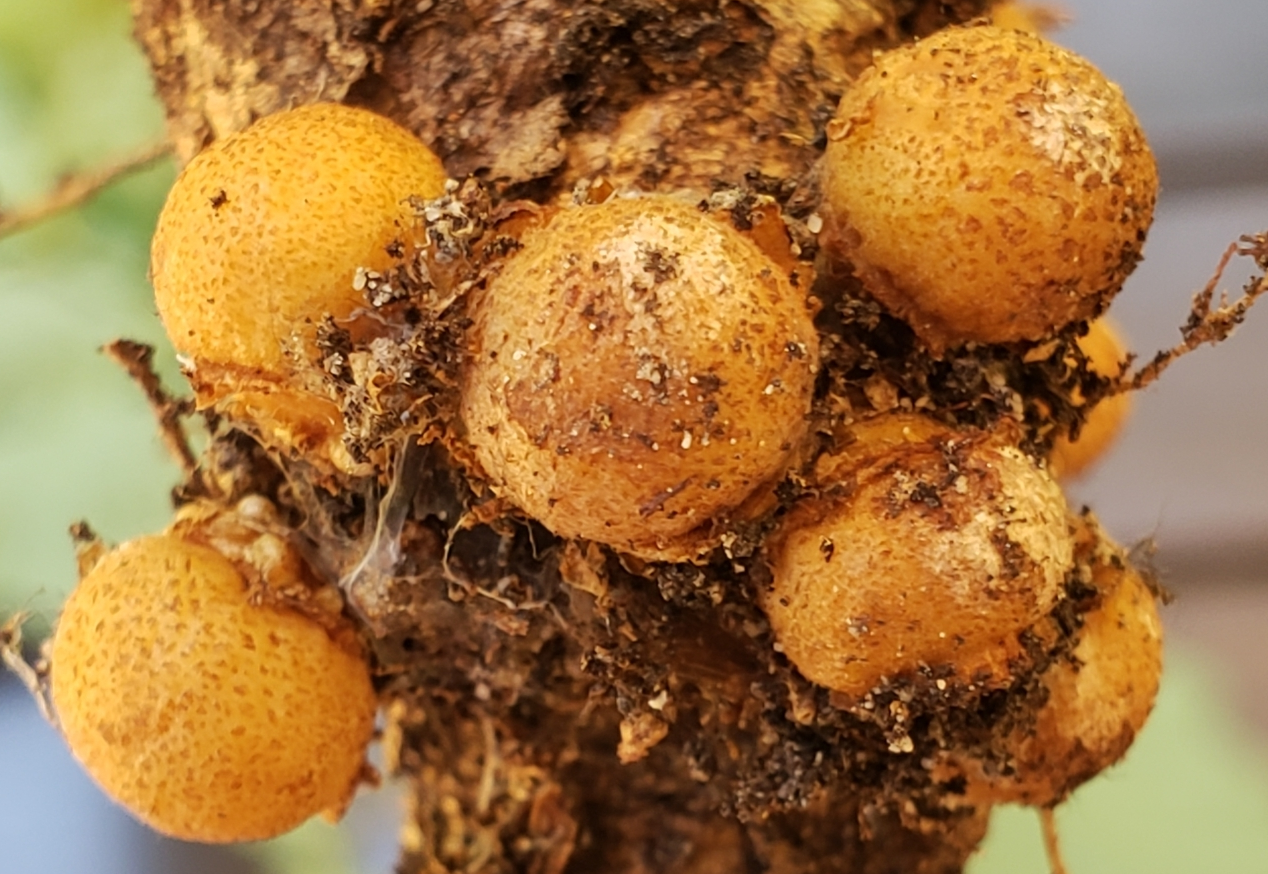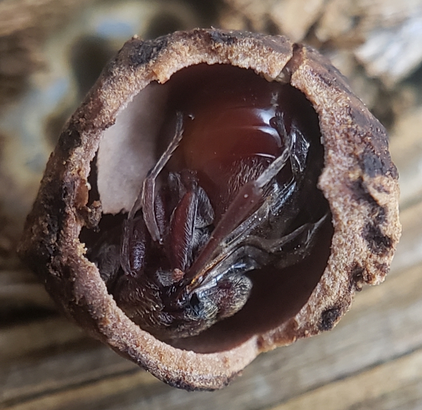Holocynips badia (agamic)
Callirhytis corallosa, new species
Host. — Quercus macrocarpa Michaux, Quercus alba Linnaeus, Quercus bicolor Willdenow, Quercus stellata Wangenheim, Quercus prinus Linnaeus, and Quercus chapmani Sargent.
Gall. — At base of thrifty sprouts about stumps or on bark of small trees just below surface of ground, 12-15 mm. in diameter and 6-10 mm. high, brown, convex, button-shaped, irregularly ridged exteriorly, some being much more rugose than others, with a clasping or sessile base and when broken off showing an impressed scar with radiating ridges which become more conspicuous in decaying galls. Galls on stellata, chapmani, and prinus are much smoother externally than those on the other three hosts mentioned and those figured (plate 32, fig. 16) are from chapmani. The outer spongy layer disintegrates with age leaving a hard woody cell 7 by 5 mm., with a wall one-half millimeter thick.
Type locality. — Fort Sheridan, Illinois. Galls collected October 3, 1914, on macrocarpa and alba, about half containing living adults and half full-grown larvae. Others were found there on October 30, on bicolor, and from another collected October 29, 1916, the adult emerged in breeding cage on April 28, 1917. These galls have been taken also at Winnctka, New Lenox, and Glen Ellyn, Illinois, on the above hosts.
Smoother button-shaped galls with the same radiate scar when detached were found on the roots of chapmani at Ocala, Florida, April 17, 1914, some empty and others containing full-grown larvae, and again October 30, 1919, when half contained pupae and half adults. More were seen at Clearwater and at Daytona and Daytona Beach, Florida. Some of these, when opened December 3, gave five larvae and two pupae which transformed December 1 2. These smooth galls were also taken on roots of stellata at Mineola, Texas, September 2, 1915. They were empty. More were taken in fall of 1917 at Pop- lar Bluff, Missouri, Texarkana, Arkansas, and two at Palestine, Texas, from one of which a living fly was cut November 20, 1917. Similar smooth galls were found on roots of prinus at East Falls Church, Virginia, September 1, 1919, and one then cut open contained a pupa, and three living flies were cut out on December 9.
The normal emergence seems to be in spring, in April, and to be distributed over two years.
”- LH Weld: (1921) American gallflies of the family Cynipidae producing subterranean galls on oak©
Reference: https://www.biodiversitylibrary.org/page/7562993#page/270/mode/1up






